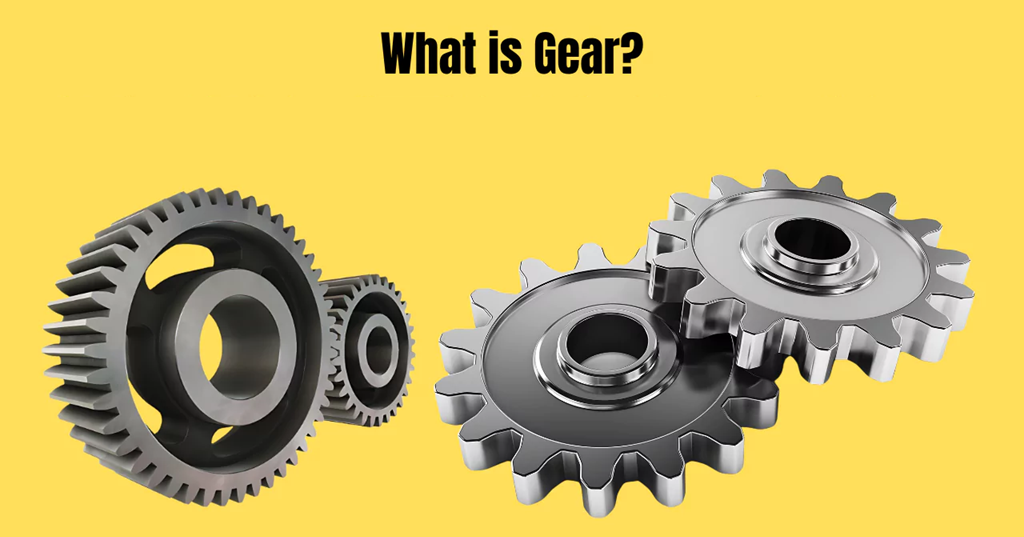
1/ Introduction
Gears are toothed mechanical components that transmit motion and torque between shafts through precise meshing of their teeth. They serve as fundamental elements in power transmission systems across automotive, aerospace, industrial machinery, and robotics. Understanding gear fundamentals - from geometry and material selection to load analysis and lubrication - is crucial for designing efficient, reliable gear trains.
2/ Gear Fundamentals
2.1/ Gear Terminology
- Module (m): Ratio of pitch diameter to number of teeth.
- Pitch Diameter (d): Diameter of the pitch circle where tooth profiles engage.
- Pressure Angle (α): Angle between line of action and tangent to pitch circle.
- Addendum (ha) & Dedendum (hf): Radial heights above and below the pitch circle.
- Backlash: Clearance between mating teeth to prevent interference.
2.2/ Tooth Profiles and Conjugate Action
Most gears use the involute tooth profile, which ensures a constant velocity ratio during meshing. The involute curve is generated by unwrapping a taut string from a base circle, providing line contact along the pressure line. Conjugate action guarantees smooth torque transmission despite small center-distance variations.
3/ Types of Gears
|
Gear Type |
Shaft Orientation |
Tooth Profile |
Typical Applications |
|---|---|---|---|
|
Spur |
Parallel |
Straight |
Simple gearboxes, low-speed drives |
|
Helical |
Parallel |
Angled (helix) |
Automotive transmissions, conveyors |
|
Bevel |
Intersecting |
Conical |
Differentials, angle drives |
|
Worm |
Non-intersecting |
Screw-like worm |
Lifts, heavy reduction applications |
|
Rack & Pinion |
Linear-to-rotary |
Straight or helical |
Steering systems, linear actuators |
|
Planetary (Epicyclic) |
Coaxial |
Various |
Robotics, wind turbines, EVs |
|
Herringbone |
Parallel |
Double helical |
High-torque, low-noise heavy machinery |
4/ Materials and Manufacturing
4.1/ Material Selection
- Alloy steels (e.g., 20MnCr5, 8620) for high strength and case hardening.
- Cast irons for moderate loads and good damping.
- Bronze and brass in worm gears to reduce friction.
- Engineering plastics (e.g., POM, nylon) for low-noise, corrosion-resistant applications.
- Composite alloys with self-lubricating properties for specialized tolerances.
4.2/ Manufacturing Processes
- Hobbing and Shaping: Subtractive machining of involute teeth on shafts or blanks.
- Gear Grinding: Finishing process to achieve high precision and surface quality.
- Powder Metallurgy: Sintered gears for mass-production with near-net shapes.
- Additive Manufacturing: Metal 3D printing for complex geometries and lightweight designs.
- Injection Molding: Polymer gears molded for consumer-grade and low-torque uses.
5/ Lubrication and Maintenance
- Lubricant Types: Mineral oils, synthetic esters, extreme-pressure (EP) additives.
- Delivery Methods: Oil bath, grease lubrication, circulating oil systems.
- Monitoring: Regular analysis of oil viscosity, contaminant levels, and wear particles.
- Maintenance Intervals: Determined by load cycles, operating temperature, and lubricant degradation.
6/ Applications
- Automotive Transmissions: Multi-speed gearboxes and differentials.
- Industrial Gearboxes: Crushers, conveyors, mixers requiring high reduction ratios.
- Robotics: Precision planetary gears for smooth, backlash-controlled motion.
- Wind Turbines: Planetary stage in main gearboxes delivering megawatt-scale power.
- Instrumentation: Micro-gears in clocks and medical devices for ultraprecision.
7/ Advanced Topics and Emerging Trends
- Topology Optimization: Weight-reduced gear bodies for aerospace and EVs.
- Additive Manufacturing: Custom internal cooling channels and lattice structures.
- Sensor Integration: Embedded strain gauges for real-time load monitoring.
- Surface Engineering: Nano-coatings and ion implantation for improved wear resistance.
- Smart Maintenance: AI-driven vibration analysis to predict gear lifecycle.
8/ Standards and Quality Control
- AGMA Standards: Defines load ratings (AGMA 2001), quality grades (AGMA 2015).
- ISO Standards: ISO 1328 for precision tolerances, ISO 6336 for strength calculation.
- Inspection Methods: Gear tooth contact analysis, profile measurement with CMM, run-out testing.
9/ Conclusion
Gears combine precise geometry, careful material choice, robust analysis, and advanced manufacturing to deliver reliable power transmission across industries. Innovations in design optimization, additive manufacturing, and condition monitoring continue to push gear performance, efficiency, and service life. Mastery of gear fundamentals enables engineers to tailor solutions that meet ever-increasing demands for power density, noise reduction, and durability.
Visit QTE Technologies (qtetech.com/en) to choose the right gear for you from famous brands with the best quality and the most reasonable price.
QTE Technologies is proud to be a global MRO provider, serving customers in more than 180 countries and always strives to ensure customers have a complete and satisfied experience. We were established in 2010, providing more than 1 million products for every industry and science and technology. In addition, you can contact us anytime through 24×7 chat support, phone, WhatsApp or email. Discover what our valued customers say about our services on our dedicated review page.
Author: Editorial Board of QTE Technologies (with a strong background in both engineering and innovation - accumulated over 15 years of experience).




